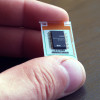
Microchipping your pet has become an integral aspect of responsible pet ownership. It not only helps in identifying your missing pet but also ensures their safe return. With pet thefts on the rise, microchipping has become more important than ever. Read on to understand why you should consider microchipping your fur baby.
What is microchipping?
Microchipping is a simple and affordable process that involves inserting a tiny chip under your pet's skin, typically between their shoulder blades. The chip contains a unique identification number that can be read using a specific scanner. The number is then registered with a centralized database, which contains your contact information, your pet's name, and a description of them. It is critical to update your information with the database if you move or change contact numbers.
The Benefits of Microchipping
Having your pet microchipped has several benefits. First and foremost, it increases your chances of being reunited with your pet in the event they get lost or stolen. It also serves as proof of ownership if a dispute arises, and it also helps shelters determine if pets brought to them are lost or abandoned. Additionally, some cities have mandatory microchipping laws. In such locations, pet owners who refuse to microchip their pets may be charged with a fine. Finally, microchipping is a way of ensuring that your pet is always identifiable, especially if they lose their collar or tags.
How does microchipping work?
When a lost pet is found, the person who finds them or an animal control officer takes them to a veterinary office, shelter, or clinic. They use a scanner to check for a microchip, which would contain the pet owner's contact information. The database linked to the chip is then contacted, and the pet owner is informed of their pet's whereabouts. As a result, microchipping assists in swiftly reuniting missing pets with their owners.
The Process of Microchipping
Microchipping is a simple, safe, and quick procedure that can be performed by a veterinarian or a qualified technician. It usually takes just a few minutes and is comparable to a routine shot. Since the process is minimally invasive, your pet may experience minimal discomfort. The chip is inserted beneath your pet's skin using a hypodermic needle. After implantation, it becomes part of your pet's anatomy and does not require any maintenance.
















